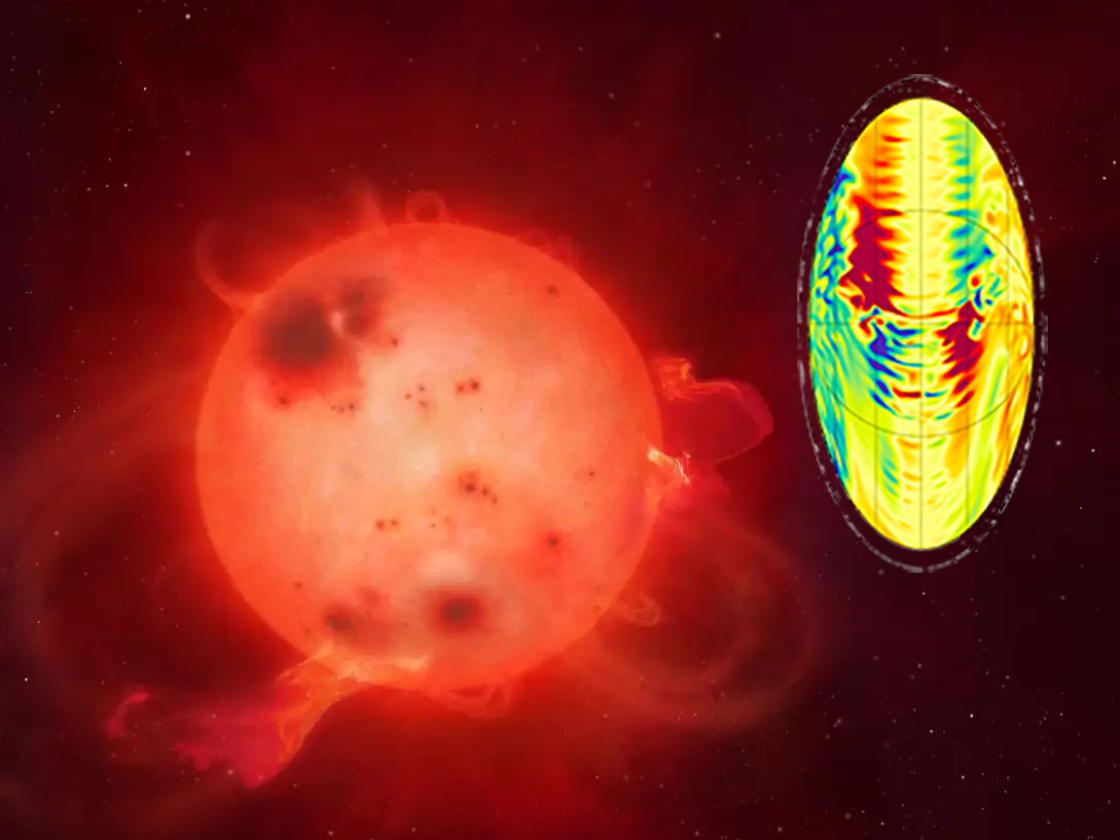Of the many different objects in the galaxy, M-dwarf stars, also known as red dwarf stars, are of particular interest to astrophysicists. These small objects are the most common type of star in the universe and have unique properties. “If you lay out all of the different types of stars [in a plot of stellar color versus brightness] we can see, based on what color they are and how bright they are, [that] most stars fall on a line we call the ‘main sequence’,” explained graduate student Connor Bice. “That's where they are born, and they stay in that same spot for most of their lives. Down at the tail end of that [line] are red dwarfs. They're the least massive, the coldest, and the smallest type of main-sequence stars.” Bice is a researcher in JILA Fellow and astrophysicist Juri Toomre's group, and both he and Toomre have been looking at some of a red dwarf's unique properties, mainly their magnetic fields and convective flows. In a new paper published in the Astrophysical Journal, Bice and Toomre have found a link between the star’s convective cycles, or the heat cycles in a star’s atmosphere, and its magnetic fields, using fluid dynamics simulations.
The Smallest and Coldest
Red-dwarf stars may be the least massive and coldest, but according to Bice, “When we actually sit down and watch some of them, we find that a huge proportion are strikingly violent magnetically, and it really sets them apart. They put off flares constantly, and many of them are brighter than any flares we've seen on the Sun,” Bice continued. “Since they have to power that magnetic activity somehow, as small and dim as they are, it raises some very interesting questions about how they're able to do it.”
Both Toomre and Bice were intrigued by this magnetic violence and wanted to research the cause of this behavior. In order to study this magnetic activity, Bice and Toomre used an open-sourced software program called Rayleigh to run a series of massively parallel 3D simulations on NASA’s Pleiades supercomputer. The simulations studied the dynamics in the interiors of three virtual red dwarfs. The researchers wanted to better understand how the star’s dynamo action, the fluid processes by which it generates magnetic fields, might differ from those of more massive stars. When analyzing the influence of the convective flows, the researchers focused on a phenomenon called a convective nest. According to Bice, the convective nest is a concentration of the star’s vertical heat transport, from the core of the star to its atmosphere, into a large structure at the star's equator that continually travels around the star. Since the convective nest is an area of particularly vigorous flows, the researchers were hopeful the nest could provide insight into the cause of the violently magnetic behavior observed in many red dwarf stars.
The Secrets of the Nest
When looking at the interactions between the convective nests and the magnetic fields in the simulations, the researchers found a couple of interesting things. “First, we're seeing that turbulent induction [a circular movement] by the nest tends to cause the magnetic fields within it to reverse their direction,” explained Bice. As the nest spun in a distinct pattern, it caused the magnetic fields entangled within it to reverse direction, similar to a snake eating its own tail. “This is comparable in some ways to the solar cycle, where the global magnetic fields of the Sun reverse direction every 11 years, though that's by a very different mechanism,” Bice added. In one of the simulations, the magnetic field reversal expanded to the rest of the star, showing a larger effect beyond the convective nest. From these results, the researchers concluded that the convective nest had a direct influence on the magnetic field of the red dwarf.
The other interesting result had to do with the outward movement of the magnetic field from the star’s convection zone. “Above this convective nest, at the surface of the star, we're seeing the outward magnetic fields get amplified,” Bice said. This amplification, where the magnetic field got stronger, not just on a large scale (covering an entire hemisphere of the star), but also on a smaller scale (a more local area), could lead to the formation of starspots, temporary dark areas on the surface of a star. Starspots come from a reduced surface temperature, caused by strong magnetic fields preventing cooled material from sinking back below the surface. In studying this amplification further, Bice and Toomre hoped to build on previous research showing that starspots can affect stellar rotation measurements, by examining the starspot origin process.
For Bice and Toomre, this study of convective nests is just a part of a much bigger picture. “These three simulations were actually drawn from a larger survey of models that we're looking to publish a paper on this summer,” Bice said. “It's shaping up as a broader take on several of the behaviors we've seen a lot since turning to red dwarfs, that you don't really see when modeling Sun-like stars.” Understanding more about how the convective nests shape magnetic fields not only allows the researchers to learn more about the properties of red dwarfs but can also help astrophysicists better calculate stellar rotation and other properties of these unique stars.
Written by Kenna Castleberry, JILA Science Communicator&





